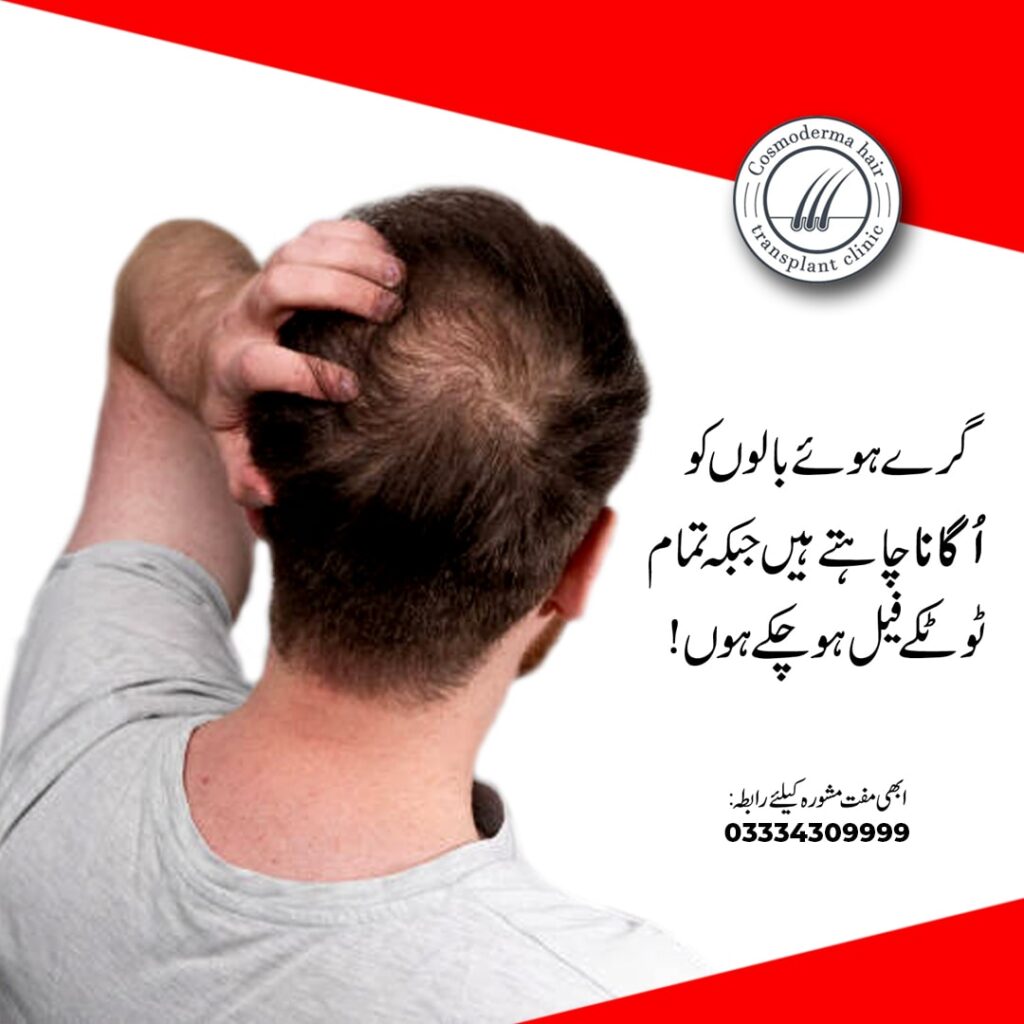Understanding How to Stop Male Pattern Baldness and manage this condition through effective treatment is essential for a healthier and fuller head of hair. Male pattern baldness is a common condition that affects a significant number of men globally, impacting their confidence and self-esteem.
How to stop Male Pattern Baldness
Defining Male Pattern Baldness
Male pattern baldness, scientifically known as androgenetic alopecia, is a hereditary condition characterized by a receding hairline and thinning of hair on the scalp. It typically follows a distinct pattern, often starting with a receding hairline and alopecia on the crown. How to stop male pattern baldness is a question many individuals with this condition seek answers to, looking for effective strategies and treatments to prevent or slow down its progression. Understanding the mechanisms and exploring viable prevention methods is crucial for those dealing with male pattern baldness. There are seven categories or stages of androgenetic alopecia among men.
Hormonal Influence
Hormones play a significant role in male pattern baldness. It’s primarily driven by dihydrotestosterone (DHT), a derivative of testosterone. DHT can shrink follicles over time, leading to thinner and shorter strands.
Age of Onset
Male pattern baldness often begins to manifest in the late teens to early twenties, although it can start later in life as well. Understanding when it typically begins can help individuals be proactive in their care routines.
Hereditary Factors
As mentioned earlier, genetics are a primary factor in male pattern baldness. If a man’s father or grandfather experienced male pattern baldness, there’s a higher likelihood of experiencing it as well.
Gradual Progression
Male pattern baldness is a gradual process. Alopecia occurs over several years, with individuals often noticing a receding hairline or thinning hair before it becomes more pronounced.
Effect on Self-esteem
The emotional impact of male pattern baldness should not be underestimated. It can affect self-esteem and confidence, leading some individuals to seek solutions like restoration treatments or lifestyle changes.
Available Treatments
There are various treatments available to manage male pattern baldness. These include topical minoxidil, oral finasteride, transplantation, and low-level laser therapy. Consulting a healthcare professional or dermatologist is essential to determine the most suitable treatment option.
Combination with Other Types of Hair Loss
Male pattern baldness can coexist with other types of alopecia, such as telogen effluvium or alopecia areata. It’s essential to diagnose the specific type of alopecia accurately for effective treatment.
Emotional Impact
Alopecia can have a significant emotional impact, leading to feelings of embarrassment, self-consciousness, or anxiety. Seeking support from friends, family, or support groups can be beneficial for those dealing with these emotional challenges.
Preventive Measures
Understanding the risk factors and early signs of male pattern baldness can help individuals take preventive measures. Adopting a healthy lifestyle, proper care routines, and early intervention with treatment options can slow down the progression of the condition.
Balanced Diet- Importance of a Nutrient-rich Diet
Maintaining a balanced diet plays a crucial role in preventing alopecia and promoting healthy hair growth. Nutrients like vitamins (A, C, D, E), minerals (iron, zinc), and proteins are essential for maintaining the health of your scalp. How to stop male pattern baldness becomes a vital concern in this context, as a nutrient-rich diet is recognized as one of the fundamental measures to combat the progression of male pattern baldness and encourage better health. Understanding the role of specific vitamins and minerals in maintenance can guide individuals in making informed dietary choices to mitigate the effects of male pattern baldness.
Incorporating Nutrient-rich Foods
Include a variety of fruits, vegetables, whole grains, lean proteins, and healthy fats in your diet. These foods provide the necessary vitamins and minerals vital for healthy hair.
Regular Scalp Massage and Gentle Care
Regular scalp massages can improve blood circulation to the follicles, promoting growth and reducing the risk of alopecia. Massaging the scalp with natural oils such as coconut or almond oil also strengthens the hair strands, contributing to effective strategies on how to stop male pattern baldness.
Gentle Hair Care Routine
Implement a gentle hair care routine. Avoid excessive pulling or tugging while combing or tying your hair, as this can weaken the shaft and contribute to baldness.
Proper Hydration and Its Impact
Adequate hydration is essential for maintaining healthy hair. Proper hydration ensures that your hair remains strong and less prone to breakage or split ends.
Maintaining Hydration Levels
Drink plenty of water throughout the day to keep your body and hair adequately hydrated. Dehydration can weaken the strands, making them more susceptible to damage.
Manage Stress for Healthy Hair
Stress and baldness Connection
Chronic stress and anxiety can contribute to alopecia and exacerbate male pattern baldness. High-stress levels can disrupt the natural growth cycle, leading to increased shedding and thinning.
Stress Management Techniques
Incorporate stress-reduction techniques like meditation, yoga, or deep breathing into your daily routine. Managing stress can positively impact your overall health, including the health of your hair.
Regular Exercise and Its Benefits
Regular physical exercise improves blood circulation, including to the scalp. Enhanced blood flow ensures that follicles receive adequate nutrients, promoting healthier growth and reducing alopecia.
Incorporating Exercise Into Your Routine
Make exercise a part of your regular routine, aiming for at least 30 minutes of physical activity most days of the week. Choose activities you enjoy to make it a sustainable habit.
Natural Remedies and Home Treatments for Male Pattern Baldness
Several natural remedies, like aloe vera, onion juice, or hibiscus, are believed to have benefits for hair health. These remedies can be used in various forms to potentially stimulate growth and improve strength.
Effective Home Treatments
Incorporate a hair care routine using natural ingredients easily available at home. Masks or rinses can provide nourishment to your hair and scalp, promoting healthier growth and contributing to effective ways on how to stop male pattern baldness. Utilizing these natural ingredients in a regular hair care
routine empowers individuals to take control of their hair health using accessible resources, potentially aiding in preventing or managing male pattern baldness through a natural and holistic approach.
FAQs about Male Pattern Baldness
1. What Causes Male Pattern Baldness?
Male pattern baldness is primarily caused by a combination of genetic and hormonal factors. It’s often related to the presence of dihydrotestosterone (DHT), a hormone that can cause follicles to shrink and eventually cease hair growth.
2. Can Male Pattern Baldness Be Reversed?
While there’s no definitive cure for male pattern baldness, certain treatments can slow down the progression and promote growth. Medications like minoxidil and finasteride, as well as hair transplant procedures, can be effective in managing the condition.
9. Are Hair Transplants a Permanent Solution?
Hair transplants can provide a permanent solution for male pattern baldness. During the procedure, follicles from areas with dense hair growth are transplanted to areas with thinning or no hair, resulting in long-lasting, natural-looking results.
Conclusion
Combating male pattern baldness is possible with a holistic approach that combines proper care, a balanced diet, stress management, and regular exercise. By incorporating these practices into your daily routine, you can maintain healthy hair and minimize the effects of male pattern baldness. Understanding how a comprehensive approach can positively impact hair health and implementing these lifestyle changes is a fundamental step in learning how to stop male pattern baldness effectively. Taking a proactive and multifaceted approach can significantly improve the overall health of your hair and scalp, potentially mitigating the progression of male pattern baldness.
People also search
| Male hair implants | Hair loss pattern |
| 2227 grafts photos | 2909 grafts before after |
How to stop male pattern baldness in Lahore Pakistan | Call or WhatsApp | +923334309999



